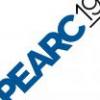Since the beginning of the COVID-19 pandemic in the United States, numerous schools have made the transition to remote learning. The Ohio Supercomputer Center (OSC) has eased the process by providing virtual laboratory portals through OnDemand, the Center’s user-friendly, web-based interface where students can access digital labs and OSC’s supercomputing capabilities.
Press Releases
Primary tabs
Researchers at Ohio University recently discovered that disrupting COVID-19’s RNA and its ability to reproduce may be an additional way to stop the virus in conjunction with the vaccine. Jennifer Hines, Ph.D., a professor in the Department of Chemistry and Biochemistry, and students in her lab utilized the Ohio Supercomputer Center (OSC) to analyze the three-dimensional structure of RNA.
The Ohio Supercomputer Center (OSC) hosted the Statewide Users Group (SUG) conference virtually on Thursday, adapting the biannual conference to an online environment after the spring edition of the event was cancelled due to the coronavirus. The Zoom gathering consisted of committee meetings, a keynote address, updates from OSC and breakout meetings.
The Ohio Supercomputer Center’s (OSC) most efficient supercomputer system, the Pitzer Cluster, just received a major upgrade—in the middle of a global pandemic.
Over the summer, the two-year-old, liquid-cooled cluster gained nearly 400 nodes and 20,000 cores, increasing the system to more than 650 nodes and almost 30,000 cores in total. The nine new racks were delivered by a team from Dell EMC who carefully adhered to COVID-19 safety protocols. The OSC staff completed the onsite assembly and testing before making the expanded computing power available to OSC clients.
As citizens around the world first caught wind about the COVID-19 virus, almost no one predicted that it would become an international pandemic with such far-reaching effects. Wasiur KhudaBukhsh, a president’s postdoctoral scholar at the Mathematical Biosciences Institute at The Ohio State University, was no exception.
The Ohio Supercomputer Center (OSC), through a partnership with IBM, has expanded their storage capacity by 8.6 petabytes. This addition almost tripled the Center’s high performance storage capacity, ensuring researchers across Ohio will have access to cutting-edge secure storage options.
Academic research provides students and staff alike the ability to pursue ground-breaking discoveries in numerous fields of study. These findings are propelled by Ohio universities’ access to high performance computing (HPC) through the Ohio Supercomputer Center (OSC). Many of the state’s researchers gathered at OSC for the biannual Statewide Users Group (SUG) conference on Thursday to share their current research and innovations that have used HPC.
Soon, researchers throughout Ohio and beyond will have access to larger and even more secure storage options when it comes to housing their voluminous and potentially sensitive data.
An Ohio Supercomputer Center (OSC) staff member will be serving as a mentor to a colleague from Wofford College as they work to boost a federal program aimed at expanding a capable and innovative advanced digital resource workforce across the country.
A paper authored by staff members of the Ohio Supercomputer Center (OSC) earned best paper honors in the Facilitation of Advanced Research Computing track at the Practice & Experience in Advanced Research Computing Conference (PEARC), being held July 28–Aug. 1 in Chicago.








